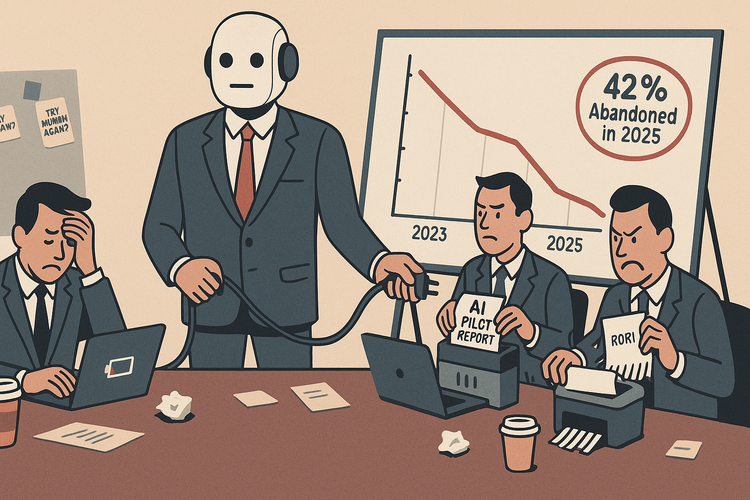Why Defense Tech ETFs Are Dominating Portfolios in 2025

Summary
Defense technology ETFs are outperforming the broader market in 2025. Backed by record global military spending, rising geopolitical risks, and the rise of remote warfare, these funds are attracting massive inflows from both retail and institutional investors. Here's what’s driving the shift—and what it means for your portfolio.
Introduction
The investment landscape in 2025 has a new frontrunner: defense technology ETFs. Against a backdrop of escalating global conflict and historic military spending, ETFs focused on advanced defense systems and remote warfare are delivering double- and even triple-digit returns. As the world adapts to the era of "War from Home," investors are recalibrating their portfolios accordingly.
Defense ETFs were once considered niche, often overshadowed by tech, healthcare, and ESG-themed investments. But a confluence of global events—from the war in Ukraine and China–Taiwan tensions to rising nationalism and rearmament in Europe—has pushed defense spending to the forefront of political and economic agendas. This surge in attention has translated into exceptional performance in the ETF market.
Trend Breakdown
Performance Snapshot
| ETF Symbol | Name | 2025 YTD Return | AUM | Dividend Yield |
|---|---|---|---|---|
| DFEN | Direxion Aerospace & Defense 3x | +70.07% | $256M | 8.05% |
| SHLD | Global X Defense Tech | +47% | $2B | N/A |
| EUAD | STOXX Europe Aerospace & Defense | +62% | $656M | N/A |
| ITA | iShares Aerospace & Defense | +24.47% | $6.2B | 0.60% |
| XAR | SPDR Aerospace & Defense | +19.94% | $2.7B | 0.57% |
These returns not only outpace the S&P 500 but also most thematic ETFs focused on AI, green energy, or semiconductors. SHLD, in particular, reflects a shift from traditional defense contractors toward modern defense technologies like AI-based surveillance and cyber warfare systems.
Record-Breaking Fund Flows
| ETF Symbol | 2025 Inflows | Growth Note |
| SHLD | $909M | Surged to $2B AUM |
| EUAD | $609M | Leading European ETF |
| DFEN.L | $1.9B | VanEck Europe Defense |
| WDEF | $588M (since March) | Rapid new ETF adoption |
The combination of high returns and growing geopolitical instability is driving capital into defense funds at a pace not seen since post-9/11.
Institutional Adoption
More than 716 institutional investors now hold the ITA ETF alone, including major players like Bank of America, Morgan Stanley, and Goldman Sachs. Many are increasing allocations, as defense offers a hedge against inflation, political uncertainty, and tech sector volatility.
A recent fund survey by ETF.com shows that 37% of institutions plan to increase their ETF allocation in defense over the next two years, citing diversification, real-world demand, and performance durability as key reasons.
Global Drivers of the Boom
Rising Defense Budgets
Global military expenditure reached $2.3 trillion in 2024—a record high.
| Region | 2024 Spending | % of GDP | YoY Growth |
| U.S. | $997B | 2.9% | — |
| NATO Europe | $485B | 2.02% | +7–28% |
| Germany | $88.5B | — | +28% |
| Ukraine | $64.7B | 34% | +2.9% |
NATO is now targeting 5% of GDP in defense by 2035. The U.S. is preparing a $1 trillion budget request, while Europe is responding to U.S. pressure by aggressively increasing military expenditures.
Flashpoints Fueling Momentum
| Conflict Zone | Impact |
| Ukraine | Major European defense investment |
| Middle East | Demand surge in missile defense tech |
| South China Sea | Indo-Pacific rearmament |
| Domestic Pressure | NATO allies increasing commitments |
The global security order is being rewritten, and capital markets are responding in real-time.
Why It Matters
Defense ETFs are no longer a narrow sector play—they are becoming a core strategy. The market is experiencing:
- A permanent realignment of budget priorities among governments.
- Technological convergence, where defense spending overlaps with AI, robotics, and cybersecurity.
- New investor bases, including younger, risk-aware investors attracted by the sector's resilience and long-term visibility.
For asset allocators, this means rethinking traditional “sector rotation” strategies. Defense may no longer be cyclical—it may be structural.
The Rise of War From Home
A major theme shaping the 2025 narrative is the shift from boots-on-the-ground to remote-enabled warfare. This includes:
- Drones deployed from overseas control hubs
- AI-enabled reconnaissance and surveillance
- Cyber-defense against infrastructure attacks
Investors are recognizing this shift. The remote weapon systems market alone is projected to grow from $10.48B in 2023 to $15.7B by 2029 (CAGR 7.04%).
Modern ETFs like SHLD and FITE are designed to capitalize on this. Their portfolios blend defense contractors with software, satellite, and data analytics firms like Palantir and Northrop Grumman.
Risks and Considerations
Despite the momentum, investors should remain cautious:
- Leverage risk in products like DFEN can amplify losses.
- Concentration risk: Some ETFs are top-heavy (60–75% in 10 names).
- Valuation: Several defense stocks are trading at or near all-time highs.
- Political turnover: Shifts in U.S. or EU leadership could reshape defense spending trajectories.
A balanced approach with core and satellite positions may be wise.
Takeaways
- Defense tech is the breakout theme of 2025.
- SHLD, DFEN, and EUAD lead the way in both returns and inflows.
- Institutional and geopolitical trends strongly support continued growth.
- Investors should weigh high return potential against concentration and macro risk.
Sources
- Bloomberg — Defense ETFs Draw $1.4 Billion as Europe Rushes to Raise Military Spending
- CNBC — Defense Stocks Gain on Middle East Tensions; Analysts See Upside
- ETF.com — Defense ETFs Top 2025 Performance Leaderboard
- Morningstar — Global X Defense Tech ETF (SHLD) Overview
- Global X — SHLD: Defense Tech ETF Details
- iShares — iShares U.S. Aerospace & Defense ETF (ITA)
- SPDR — Aerospace & Defense ETF (XAR)
- VanEck — European Defense ETF (DFEN.L)
- WisdomTree — Europe Defence UCITS ETF (WDEF)
- NDTV Profit — Google’s Gemini CLI: Use Cases and Developer Reactions
- NATO — Allies Agree to Increase Defense Spending Target to 5% of GDP
- U.S. Department of Defense — FY2026 $1 Trillion Defense Budget Announcement
- Citrini Research — “War from Home” Investment Thesis Report





